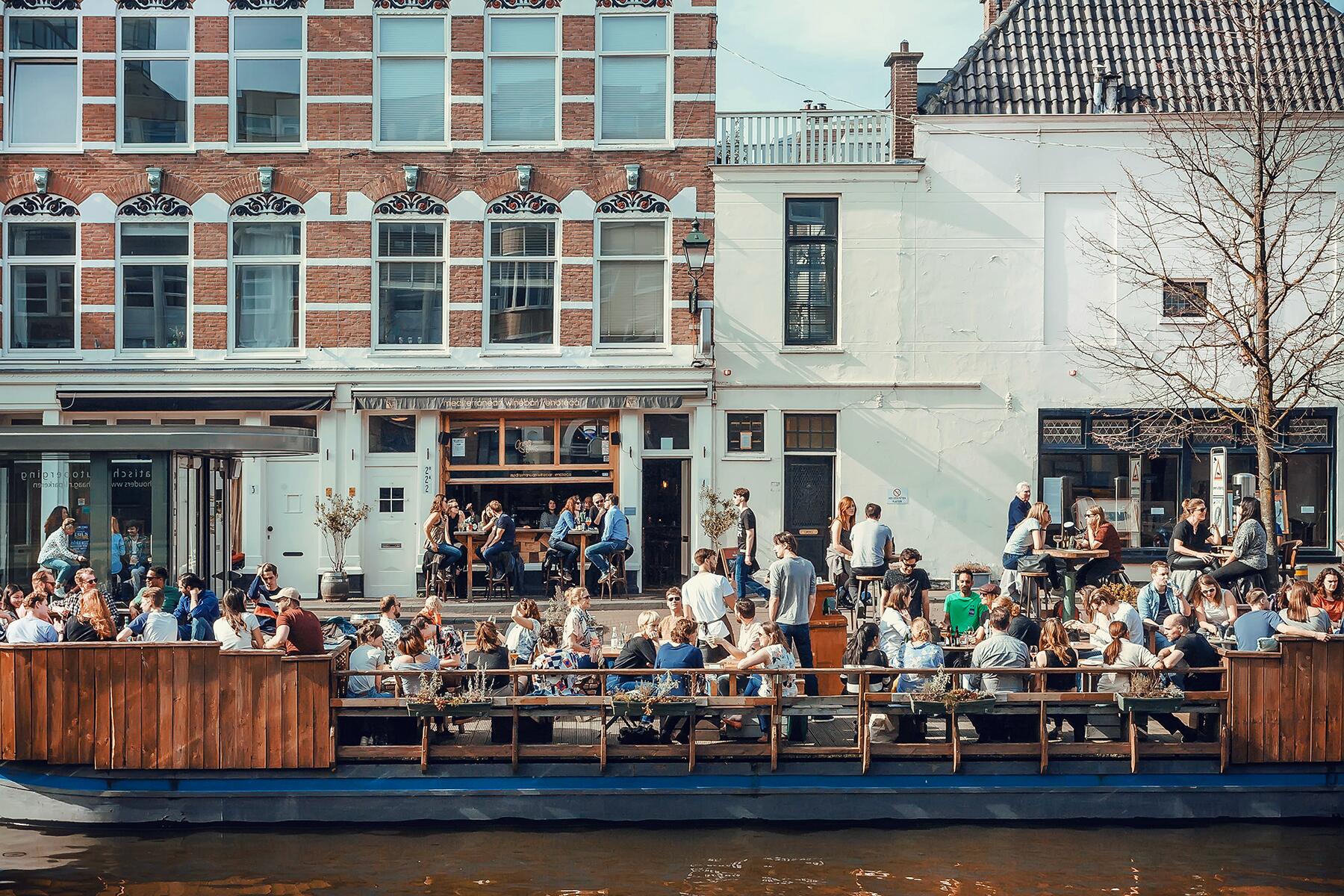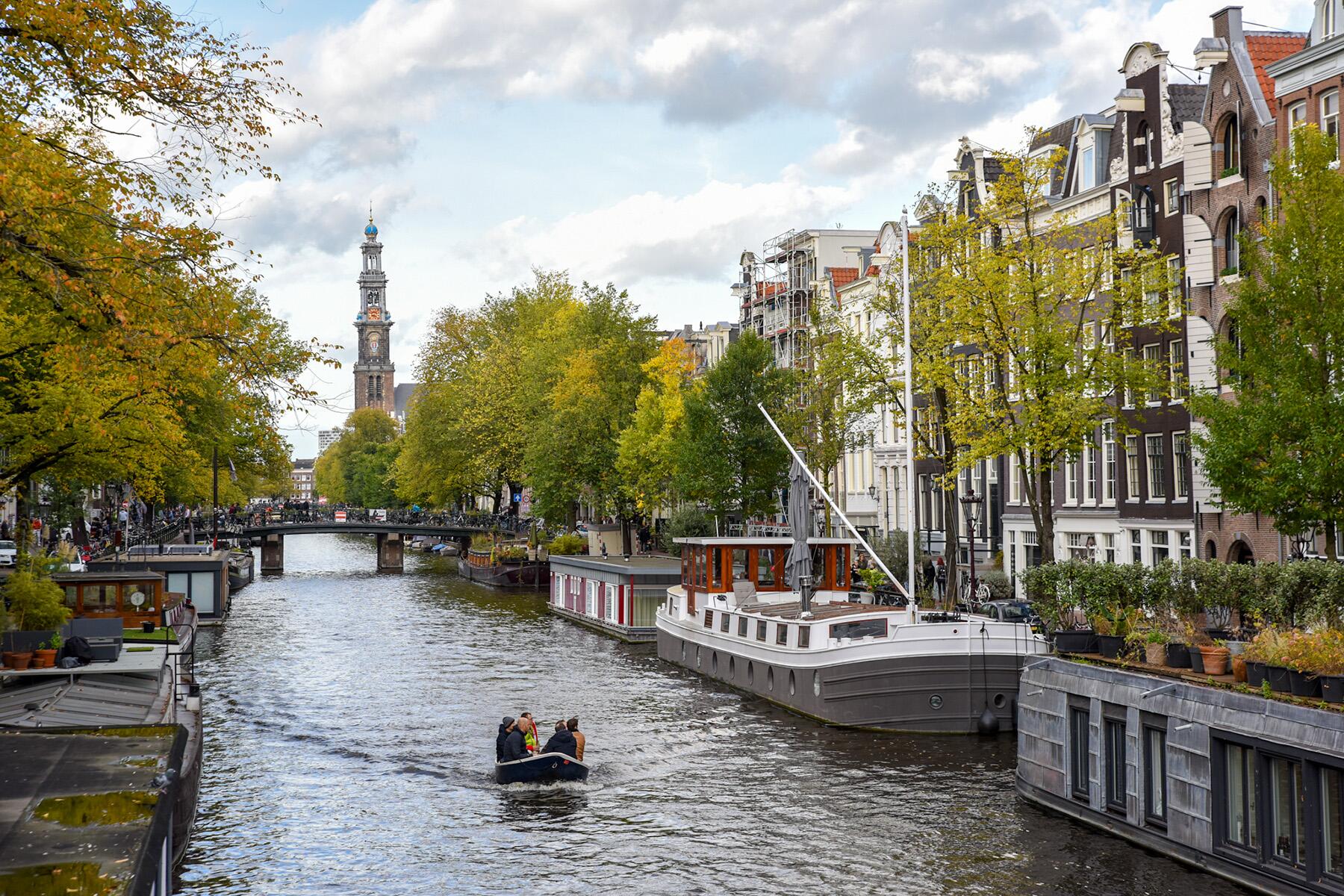It's not what you think.
On most streets in central Amsterdam, tourists can’t go far without seeing these three letters: XXX. The symbol is printed on signs, carved into walls, painted on ceilings, emblazoned on flags, and featured in murals. It even adorns hallowed locations, such as the Royal Palace of Amsterdam and many of the Dutch city’s pretty churches.
Across the world, XXX has come to denote something pornographic or explicit. So visitors to Amsterdam could be forgiven for wondering just how far its infamous red light district sprawls. What many wouldn’t realize is most of these XXX icons in Amsterdam are not remotely linked to anything raunchy. Quite the opposite, in fact.
Across Amsterdam, XXX honors Andrew, the city’s patron saint. On November 30th, St. Andrew’s Day, the holy man Andrew is celebrated not just in the Netherlands but in a remarkable number of different locations where he is a patron saint. Many saints are patrons of two or three different places, like St. Christopher. Visitors to Havana in Cuba or to Vilnius in Lithuania will see sites that celebrate the city’s patron, Christopher, such as the Cathedral of San Cristobal in the former or the impressive statue, which depicts him in the latter.
That artwork in downtown Vilnius sits outside the city’s oldest church, named after another saint whose influence spread far and wide. Built in the 1300s in majestic Gothic style, St. Nicholas Church is one of Vilnius’ top tourist attractions. The man it is named after is the patron saint of both Russia and Greece.
But few saints are as widely venerated as Andrew, who is at the center of a devotional tug-of-war that spans the globe. He is the chief saint of locations within Romania, Barbados, Italy, Ukraine, Scotland, Cyprus, Spain, Russia, Greece, and the Philippines. The term patron saint refers to a holy person to whom a church, community, or location is dedicated.
Recommended Fodor’s Video
The prime example is St. Patrick. Tourists to Ireland will see Patrick’s name adorning churches, parks, schools, museums, lakes, and even mountains like Croagh Patrick, a popular hiking destination in the western county of Mayo. Patrick is perhaps the world’s most famous saint, partly because the annual day in his honor has become such a popular party. Yet, for the wide-ranging influence of the spiritual variety, St. Andrew may have St. Patrick beat. There are churches dedicated to Andrew on every continent, except for Antarctica, understandable perhaps, given it’s home to only a few thousand people.
Tourists in Singapore have the whitewashed St. Andrew’s Cathedral in Singapore, in Sydney, there is the hulking St. Andrew’s Cathedral, and in New York, there is the Georgian Revival-style St. Andrew’s Church. And Andrew isn’t even the patron saint of any of these places.
Yet, St. Andrew is esteemed in so many different locations that his body parts have been scattered across the planet. Quite literally. They are called relics, and travelers may encounter these physical fragments of saints displayed at churches throughout the world.
St. Valentine’s remains, for example, are supposedly possessed by a dozen churches in Europe. Tourists can see Valentine’s skull in Rome at the Basilica di Santa Maria in Cosmedin, his heart in Dublin at Whitefriar Street Church, his bones in Glasgow at Duns Scotus Friary, or his shoulder in Prague at the Basilica of St. Peter and St. Paul.

Travelers who wish to view the relics of St. Andrew can head to Italy, Scotland, Greece, or Poland. His claimed remains are exhibited in the crypt of Amalfi Cathedral, located along Italy’s touristy Amalfi coast. Pieces of Andrew are also showcased at the Church of St. Andrew and St. Albert in the Polish capital of Warsaw, St. Mary’s Cathedral in the Scottish capital of Edinburgh, and the Basilica of Saint Andrew in the Greek city of Patras.
So how did Andrew become so significant? He was born about 2,000 years ago in a village called Bethsaida, which is believed to have been located just north of Israel’s Sea of Galilee. According to the Bible, Andrew was one of the twelve apostles, a group of disciples chosen by Jesus Christ.
Jesus taught each of these disciples and sent them on journeys to preach and heal. St. Andrew’s mission took him to the lands that surround the Black Sea, a colossal body of water bordered by Ukraine, Turkey, Georgia, Bulgaria, Romania, and Russia. Now he is the patron saint of those latter two countries.
In Russia, the highest honor awarded by its Government is the Order of St. Andrew. Meanwhile, Andrew’s name marks one of this country’s finest buildings and most popular tourist attractions: the magnificent Saint Andrew’s Cathedral. About 800 miles south of Saint Petersburg, in Romania, St. Andrew’s status is even more exalted.
He’s widely considered to be the man who brought Christianity to Romania, where more than 90% of the population now follow this religion. The cave where Andrew’s first baptism on Romanian soil occurred is now a unique tourist attraction. Called the Monastery Cave of Saint Andrew, it is located in the quiet countryside about 40km west of the Romanian Black Sea-side city of Constanta.
Just as deeply as in Romania, St. Andrew is cherished in Scotland. One of this country’s most picturesque tourist destinations honors this holy man. The seaside town of St. Andrews is renowned for its beautiful medieval architecture, memorable ocean scenery, pristine botanic gardens, and the world’s most famous golf course, St. Andrews Golf Club. It was given this name due to a legend that, about 1,700 years ago, the relics of St. Andrew were taken to this Scottish location by Greek Saint Regulus.
Regulus was said to have sourced these remains from Patras, the Greek location where St. Andrew died. Now one of Greece’s largest cities, perched by the ocean in the country’s west, Patras’ chief tourist attraction is the enormous Cathedral of Saint Andrew.
The largest church in all of Greece, it is topped by a monumental dome, and its interior is embellished by extraordinary murals. Several of these intricate artworks depict St. Andrew and his death here in Patra. He was nailed to a cross, which resembled an X.
As a result, the lasting symbol of St. Andrew and his martyrdom became an X. This symbol features on the national flag of Scotland. And a trio of St. Andrew’s crosses adorns Amsterdam’s red, white, and black coat of arms. That’s because he was also the patron saint of fishermen and, many centuries ago, this Dutch city relied heavily on the fishing industry.
Amsterdam’s endless XXX symbols can be misleading to some tourists, who mistake the mark for something seedy, but the truth is XXX belies the city’s devotion to a remarkable religious figure. The triple-Xs all over the European city are an ever–present reminder—a celebration—of the far-ranging impact of St. Andrew. The holy man who to this day is worshipped on every continent and lends his name to countless tourist attractions.




So are those XXXs marking some particular religious site connected to St. Andrew, or are they just there as a sort of religious good-luck charm?